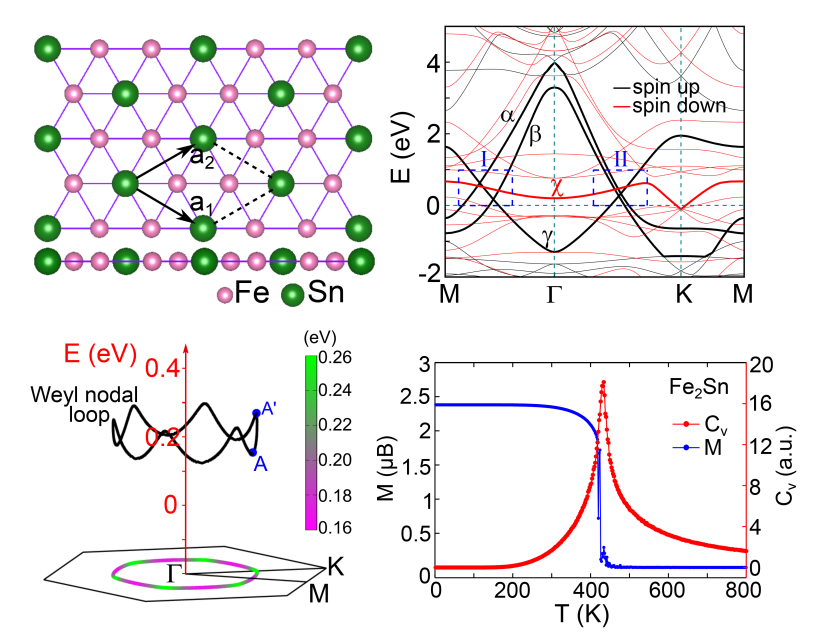Recently, Professor Yu Jia theoretically reported that the two dimensional ferromagnetic Fe2Sn monolayer with a planar geometry and an out-of-plane magnetic easy axis exhibits the massless Weyl nodal lines, and the research work is published on Phys. Rev. B, 101, 165403.
https://journals.aps.org/prb/abstract/10.1103/PhysRevB.101.165403

Recent experimental realizations of the topological semimetal states in several monolayer systems are very attractive because of their exotic quantum phenomena and technological applications. Based on first-principles density-functional theory calculations including spin-orbit coupling, we here explore the drastically different
two-dimensional (2D) topological semimetal states in three monolayers, Cu2Ge, Fe2Ge, and Fe2Sn, which are isostructural with a combination of the honeycomb Cu or Fe lattice and the triangular Ge or Sn lattice. We find that (i) the nonmagnetic (NM) Cu2Ge monolayer with a planar geometry exhibits the massive Dirac nodal lines, (ii) the ferromagnetic (FM) Fe2Ge monolayer with a buckled geometry exhibits the massive Weyl points, and (iii) the FM Fe2Sn monolayer with a planar geometry and an out-of-plane magnetic easy axis exhibits the massless Weyl nodal lines. It is therefore revealed that mirror symmetry cannot protect the fourfold-degenerate Dirac nodal lines in the NM Cu2Ge monolayer but preserves the doubly degenerate Weyl nodal lines in the FM Fe2Sn monolayer. Our findings demonstrate that the interplay of crystal symmetry, magnetic easy axis, and band topology is of importance for tailoring various 2D topological states in Cu2Ge, Fe2Ge, and Fe2Sn monolayers.